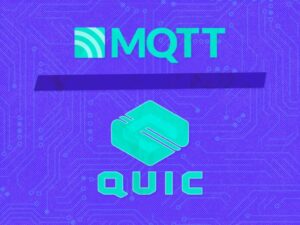
Data has value, right? That’s pretty much the perception when you thumb through Harvard Business Review and similar business literature. It seems that the modern business world is obsessed with data. You’ve undoubtedly heard the tired cliché that “data is the new oil” alluding to the immense power and value that it provides for unlocking business success. In truth, data is, unfortunately, more like the new plastic — highly refined for single use, ever increasing in volume, and has the digital waste impact we should give more thought to.
And this is true in many cases because with our ever-increasing analytical capabilities (burgeoned by machine learning and artificial intelligence) we can make much smarter data-driven decisions that are good for our business.
This realization has led many companies to think that collecting as much data as possible is the goal — with the hope of being able to churn it into some sort of value later down the line. Or perhaps they fear their competitors will snatch it from them and leave them with nothing. I imagine these as “digital dragons,” and I want to discuss why they are so problematic.
“In truth, data is, unfortunately, more like the new plastic — highly refined for single use, ever increasing in volume, and has the waste impact we should give more thought to.”
Avoid the Digital Dragon Title
In JRR Tolkien’s epic tale, The Hobbit, he introduces a dragon called Smaug who quickly becomes the main antagonist. The dragon guards vast hordes of treasure in its mountain and has done for 150 years by the time the story gets started. What follows is a dramatic and frenzied fight over protecting his treasure, for no discernable reason.
The point is that these companies who hoard digital data are the same as Smaug — making themselves a target in various ways. For example, when you hold large amounts of data you become a target for malicious actors who want to steal and profit from that data. Or perhaps you are accumulating legal liability that you aren’t aware of — only to find out that you are subpoenaed in the future. All of these are beyond the pure cost of storing and structuring all this data — which can cause many headaches on its own.
Instead of becoming a digital dragon that collects data for its own sake, we should focus on being intentional and thoughtful about collecting data that provides value to our end customers and other stakeholders.
Practices for Reducing Digital Waste
Here are some ideas for what you can do to reduce your digital waste footprint:
Implement Retention Policies
It can be a good idea to codify how you want to treat digital data across your organization so that everyone is on the same page about how things are handled. Have strict policies in place that dictate the criteria for data collection and for how this data is retained in line with your other strategic objectives.
Regular Data Audits
You should create a regular data audit in your workflows that assesses your data warehouse against your policies to check if anything can be deleted. Often this will help to fight against data that is outdated — helping you to clear space and reduce risk without compromising on your company’s operations.
Accountability
Naming specific people within your organization to manage digital waste is also an important step so that you can be confident that someone is consistently working on it. Having one (or many) people driving your digital waste strategy will result in much better maintenance over the long term and create a culture of digital care that can inform everything else you do.
Be Ruthless
Above all, reflect on the value. If this data you’re gathering has no real value but brings with it risk and operational cost, discard it.
These are just a few things that can be done to mitigate the impact of digital waste within your organization — but every one of them helps to craft an environment where you’re not just collecting data for the sake of it. This is not only a way to reduce cost and administrative difficulty, but also to mitigate future legal and regulatory risks that are part and parcel of holding sensitive digital information.
Information Has Value, Data Has Cost
To have value our data needs to have context and application. We must shift from seeing mere data to appreciating information value. For data to have value, it has to be used. For this, a data integration layer strategy plays a crucial role. Acting as a key component in data management, it harmonizes data from multiple sources and presents it in a unified, readily accessible format.
Also vital, is a microservice architecture. Each microservice can access the needed data independently from the integration layer, ensuring data consistency across different services and facilitating a more modular and scalable system. This strategic approach not only reduces the cost associated with handling disjointed data but also adds value by enabling efficient data analysis and supporting informed business decision-making.
- SEO Powered Content & PR Distribution. Get Amplified Today.
- EVM Finance. Unified Interface for Decentralized Finance. Access Here.
- Quantum Media Group. IR/PR Amplified. Access Here.
- PlatoAiStream. Web3 Data Intelligence. Knowledge Amplified. Access Here.
- Source: https://www.iotforall.com/disruptions-dragons-is-your-big-data-strategy-creating-digital-waste
- :has
- :is
- :not
- :where
- 1
- 11
- a
- Able
- About
- access
- accessible
- across
- acting
- actors
- Adds
- administrative
- against
- All
- also
- amounts
- an
- Analytical
- and
- anything
- Application
- appreciating
- approach
- architecture
- ARE
- artificial
- artificial intelligence
- AS
- associated
- audit
- aware
- BE
- because
- become
- becomes
- becoming
- being
- Better
- Beyond
- Big
- Big Data
- Brings
- business
- but
- by
- called
- CAN
- capabilities
- care
- cases
- Cause
- check
- clear
- Collecting
- collection
- collects
- Companies
- Company’s
- competitors
- component
- compromising
- confident
- context
- Cost
- craft
- create
- Creating
- criteria
- crucial
- Culture
- Customers
- data
- data integration
- data management
- data warehouse
- data-driven
- Decision Making
- decisions
- different
- Difficulty
- digital
- discuss
- disruptions
- do
- done
- down
- Dragon
- dramatic
- driving
- each
- efficient
- else
- enabling
- end
- ensuring
- Environment
- EPIC
- Ether (ETH)
- EVER
- ever-increasing
- Every
- everyone
- everything
- example
- facilitating
- fear
- few
- fight
- Find
- Focus
- follows
- Footprint
- For
- format
- from
- future
- gathering
- Give
- goal
- good
- Handling
- harvard
- Have
- having
- he
- headaches
- heard
- help
- helping
- helps
- highly
- his
- hold
- holding
- hope
- How
- HTTPS
- i
- idea
- ideas
- if
- imagine
- immense
- Impact
- important
- in
- increasing
- independently
- inform
- information
- informed
- integration
- Intelligence
- Intentional
- into
- Introduces
- iot
- IT
- ITS
- jpg
- just
- Key
- large
- later
- layer
- learning
- Leave
- Led
- Legal
- liability
- like
- Line
- literature
- Long
- machine
- machine learning
- Main
- maintenance
- make
- Making
- manage
- management
- many
- max-width
- mere
- Mitigate
- Modern
- modular
- more
- Mountain
- much
- multiple
- must
- needed
- needs
- New
- no
- nothing
- objectives
- of
- often
- on
- ONE
- only
- operational
- Operations
- or
- organization
- Other
- our
- out
- over
- own
- page
- part
- People
- perception
- perhaps
- Place
- plastic
- plato
- Plato Data Intelligence
- PlatoData
- plays
- Point
- policies
- possible
- power
- presents
- pretty
- Profit
- protecting
- provides
- quickly
- real
- real value
- realization
- reason
- reduce
- reduces
- reducing
- refined
- reflect
- regular
- regulatory
- result
- retention
- review
- right
- Risk
- risks
- Role
- sake
- same
- scalable
- seeing
- seems
- sensitive
- Services
- shift
- should
- similar
- single
- smarter
- So
- some
- Someone
- Sources
- Space
- specific
- stakeholders
- started
- Step
- Story
- Strategic
- strategic approach
- Strategy
- strict
- structuring
- success
- Supporting
- system
- tale
- Target
- term
- that
- The
- The Future
- their
- Them
- themselves
- These
- they
- things
- think
- this
- thought
- Through
- time
- tired
- to
- treat
- true
- truth
- undoubtedly
- unfortunately
- unified
- unlocking
- use
- used
- value
- various
- Vast
- vital
- volume
- want
- Warehouse
- Waste
- Way..
- ways
- we
- What
- when
- which
- WHO
- why
- will
- with
- within
- without
- workflows
- working
- world
- years
- you
- Your
- zephyrnet









